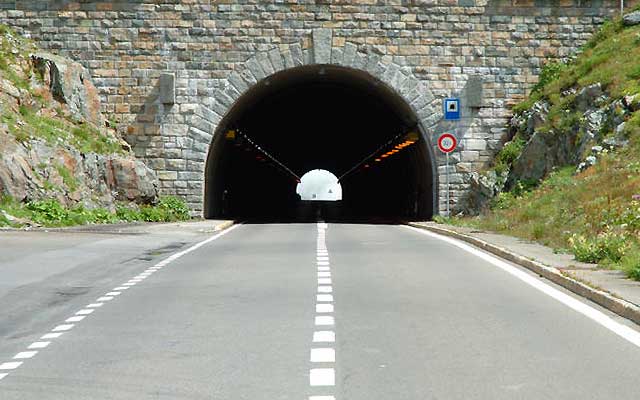The longest European road tunnel is in Norway and is more than 15 miles long. Many are over 6 miles long – more than three times the length of our longest, the Queensway tunnel near Liverpool. So if you’re planning a European road trip there’s a fair chance you’ll come across a tunnel longer than you’re used to. It’s important to know how to stay out of trouble and what you should do if there’s an emergency.

As you approach a tunnel:
- Sunglasses off.
- Lights on.
- Keep your distance.
- Listen to local traffic radio.
- Look out for phones and emergency exits.
If it’s very busy in the tunnel
- Use your hazard lights if traffic slows suddenly.
- Leave at least a 5-metre gap if traffic stops.
- Turn your engine off when you’re not moving.
- Don’t get out of your vehicle.
If you break down
- Use your hazard lights.
- Pull into a lay-by, emergency lane or as far to the nearside as you can.
- Turn off your engine.
- Walk to a safe place – wear a reflective jacket and watch out for other traffic.
- Use an emergency phone to call for help.
- Wait in your vehicle if there’s no other safe place.
If there's an accident
- Use your hazard lights.
- Park as far to the nearside as possible.
- Turn off your engine.
- Walk to a safe place – wear a reflective jacket and watch out for other traffic.
- Use an emergency phone to call for help.
- Help anyone who's injured.
Fire
Fire is very rare but if it does happen, every second counts. Tunnels are fitted with smoke detection systems and watched closely, but drivers can help too. Don’t wait to be told what to do but do follow any instructions from tunnel staff or rescue services.
If your own vehicle catches fire
- Use your hazard lights.
- Drive out of the tunnel if you can, but don’t make a U-turn or reverse.
- If you can't drive out, drive to a lay-by, an emergency lane or pull over as far to the nearside as you can.
- Turn off your engine but leave the key in.
- Use an emergency phone to call for help.
- Don't open the bonnet, which may be hot and can increase the fire.
- Don’t try to put the fire out yourself, unless it’s only just started.
- If you can’t put the fire out, leave quickly using emergency exits.
- Don't waste time picking up personal belongings.
- Help injured people get to safety too.
If another vehicle catches fire
- Use your hazard lights.
- Keep a good distance from the burning vehicle.
- Park your vehicle in a lay-by, emergency lane or pull over as far to the nearside as you can.
- Never make a U-turn or reverse.
- Turn off your engine but leave the key in.
- Use an emergency phone to call for help.
- Leave quickly, moving away from the fire and using emergency exits.
- Don't waste time picking up personal belongings.
- Help injured people get to safety, too.
19 January 2017
